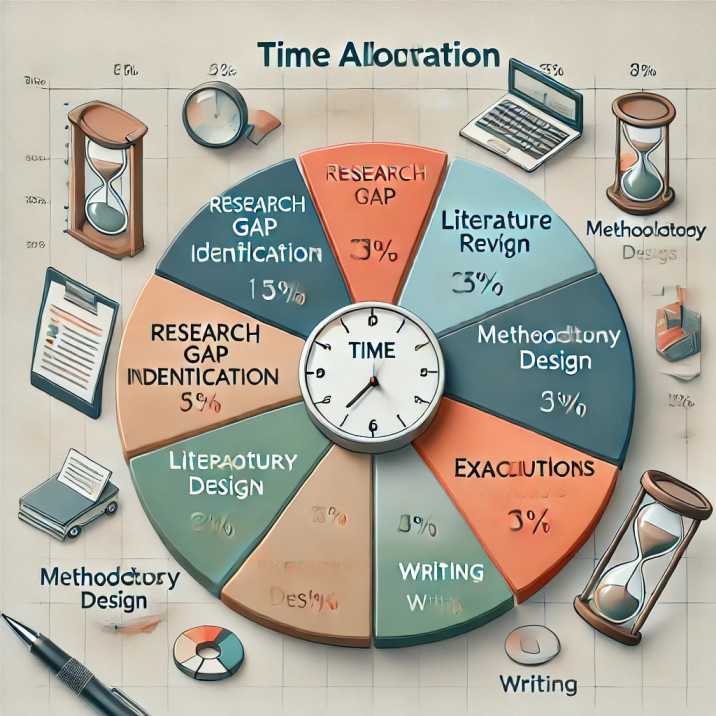Welcome to the odaswa (Operative for Dissemination of Academic Scholarly Works to All) Journal, your gateway to a dynamic and collaborative realm where the frontiers of engineering, technology, science, and management converge. As a non-profit, open-source publisher, odaswa is dedicated to fostering a global community of scholars who share a passion for advancing knowledge in these critical fields. Read more
Beyond the Journal :: Blog
Time Allocation Strategies for Effective Research Paper Preparation: Maximizing Productivity Across Key Research and Writing Phases
Preparing a research paper requires meticulous planning and thoughtful time allocation across its various stages. Each phase, from identifying a research gap to writing the final draft, plays a crucial role in ensuring the paper's quality and impact. Below is a detailed breakdown of how to divide your time efficiently for research gap identification, literature review, methodology design, execution, and writing.

1. Identifying the Research Gap (15–20% of Total Time)
The first step in writing a research paper is finding a meaningful research gap, which sets the foundation for originality and relevance. Allocating around 15–20% of your total preparation time to this phase is essential. This process involves studying recent publications, understanding emerging trends in your field, and analyzing unresolved problems in existing research. By carefully evaluating past studies, you can identify underexplored areas that offer opportunities for impactful contributions. Additionally, this is the time to refine your research question, ensuring it addresses a specific issue while aligning with your field's broader context.
2. Reviewing Literature and Designing Methods (30–40%)
A significant portion of your time—approximately 30–40%—should be devoted to reviewing the existing literature and planning your research methodology. The literature review is particularly crucial, as it provides a theoretical foundation for your study and helps contextualize your work within the existing body of knowledge. This phase may take 20–25% of your time as you delve into high-quality, peer-reviewed articles and synthesize key findings. Designing the methodology, which requires about 10–15% of your time, is equally important. A well-crafted research design ensures that your methods are aligned with your objectives, feasible within your resources, and capable of producing valid and reliable results.
3. Execution, Analysis, and Writing (40–50%)
The final stages of preparing your paper—execution, analysis, and writing—demand the largest share of your time, roughly 40–50% of the total effort. Execution involves conducting experiments, simulations, or surveys, depending on the nature of your study. This step, along with data analysis, may take 25–30% of your time, as it requires precision and careful validation of results. Once the findings are in place, dedicate 15–20% of your time to writing and refining the manuscript. Start with drafting the abstract, introduction, and methodology sections, followed by the results and discussion. Multiple rounds of revisions are necessary to enhance clarity, coherence, and overall quality. A polished manuscript not only communicates your findings effectively but also increases your chances of publication.
Time management is a vital aspect of preparing a research paper, as it ensures that each phase receives adequate attention. Dedicating sufficient time to identifying research gaps, conducting a comprehensive literature review, designing robust methodologies, and crafting a well-written manuscript can significantly improve the quality and impact of your work. By carefully planning your efforts, you can streamline the research process and enhance the likelihood of success in your academic endeavors.
This Content Sponsored by Buymote Shopping app
BuyMote E-Shopping Application is One of the Online Shopping App
Now Available on Play Store & App Store (Buymote E-Shopping)
Click Below Link and Install Application: https://buymote.shop/links/0f5993744a9213079a6b53e8
Sponsor Content: #buymote #buymoteeshopping #buymoteonline #buymoteshopping #buymoteapplication

